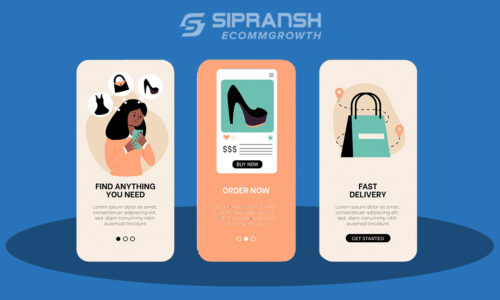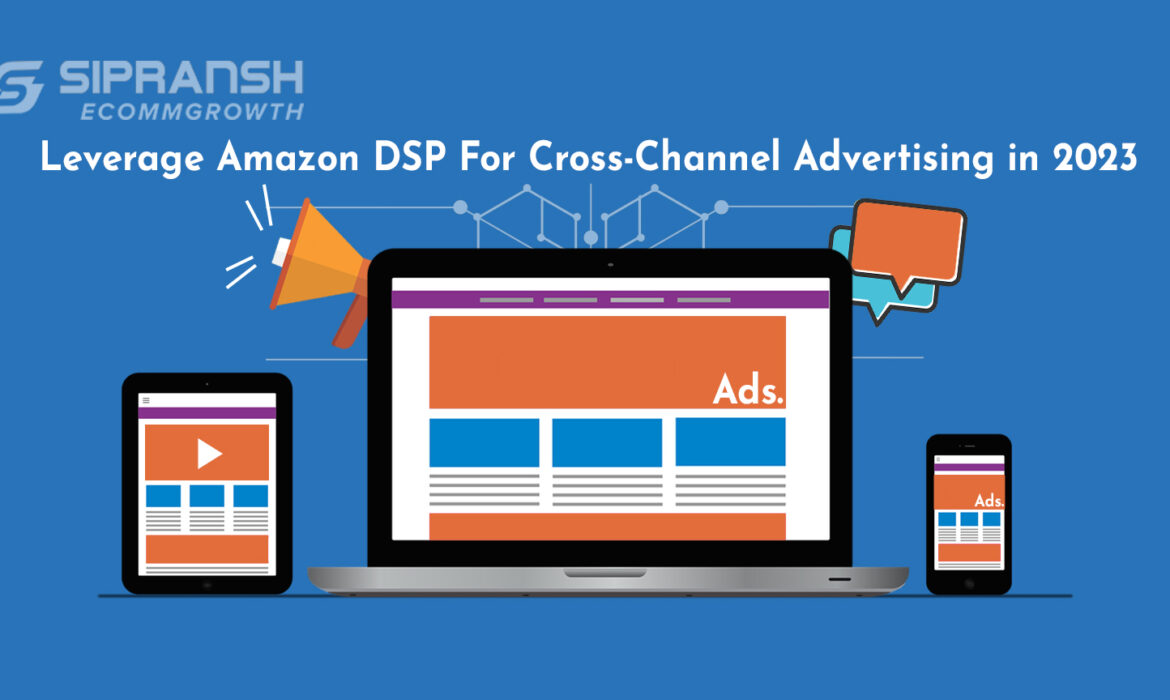
If you have attempted everything on Amazon but still cannot match your customer acquisition goals, this post is meant for you. In this blog post, we will discover everything about Amazon’s Demand Side Platform (DSP), what it is, the types of ads included, how it works, and everything advertisers need to know. But first, we will explain in brief Amazon’s Advertising Structure.
Although Amazon welcomes over 2 billion visitors a month, your audience may not be one of them. Amazon has also raised its ad products so much in the past years that customers often get overwhelmed with the ads. If you wish to grow your reach and appeal to fresh customers, Amazon’s demand-side platform (DSP) may be the solution. It is an ad platform designed to engage off-Amazon audiences specifically and get them to Amazon.
Shoppers can discover these ads in many different forms, including mobile banner ads, mobile interstitial ads, desktop display ads, in-stream video ads, image and text ads, and many more. Any vendors and third-party retailers can use Amazon DSP to build brand awareness and retarget possible customers. Believe us if we say that Amazon is a paradise for shoppers, sellers, and advertisers. If you don’t believe then take a glimpse at the stats mentioned below:
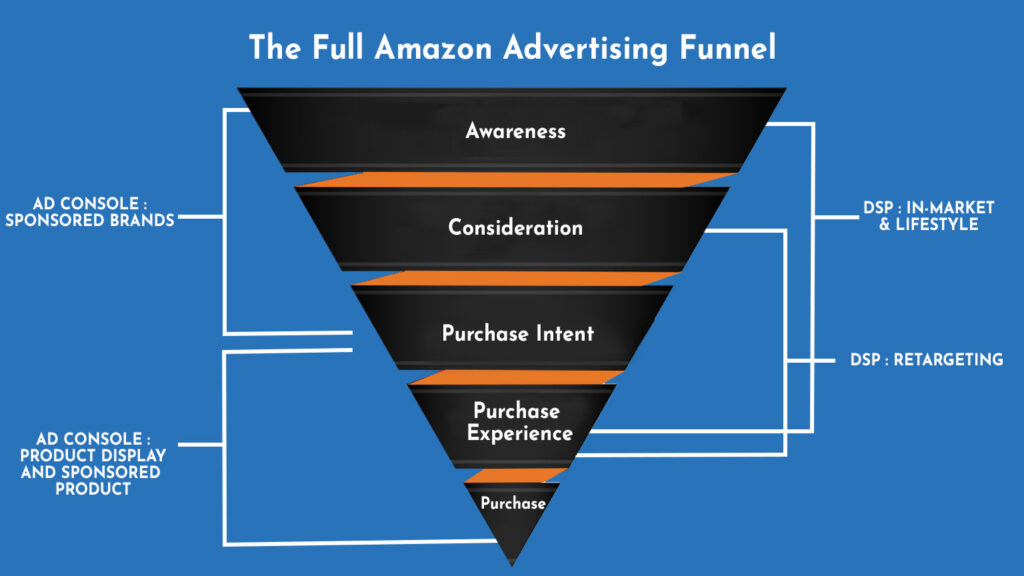
Amazon.com generates 50% of all e-commerce sales and 5% of the total US retail sale.
Over 95 million US citizens have a Prime membership, and they spend roughly over $1.4 thousand per year. According to a survey driven by Advertiser Perceptions, Amazon encounters approx 2 billion visitors per month. Therefore, Amazon is the favored DSP platform for 41% of advertisers.
Being a site solely dedicated to buying products and where shopper clearly expresses their buying intention, Amazon has approached accurate purchase intent data, which is unparalleled in quality and reach by being a website only dedicated to purchasing products, also where shopper plainly expresses their buying intention. It is a no-brainer that is why the Amazon Advertising platform entices massive brands and advertisers.
We recommend reading our guide if you are new to the Amazon Demand Side Platform. This guide will teach you the basics of using Amazon Sponsored Advertising, including creating an account, setting up your first campaign, and tracking your results.
What Is Amazon Demand Side Platform (DSP)?
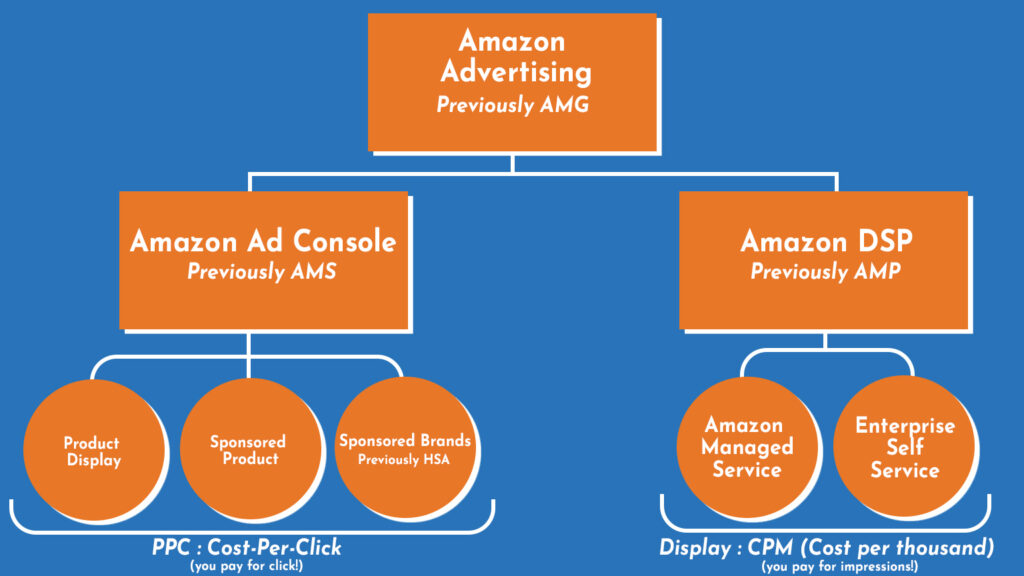
Amazon Demand Side Platform (DSP) is an advertising platform that allows advertisers to programmatically buy and manage display, video, and audio ad inventory across Amazon-owned and third-party platforms. The platform uses data from Amazon to help advertisers target their ads to specific audiences based on demographics, interests, and past purchasing behavior. Advertisers can also use their first-party data to further refine their targeting. Amazon DSP offers a variety of ad formats including display, video, audio, and custom ads. Advertisers can create and manage campaigns using a self-service interface or work with an Amazon Advertising representative to create and optimize campaigns. Hence, Amazon DSP provides advertisers with a powerful tool for reaching targeted audiences at scale across Amazon’s network of platforms and partner sites.
You can use Amazon DSP to reach audiences on:
- Amazon website
- Fire TV
- IMDb
- Freedive (IMDb Streaming)
- Kindle
- Apps
- Published Partners
- Twitch
- Third-Party Exchanges
- Digital Signage Ads
Benefits Of Amazon’s DSP
1. Advanced Targeting Features: Every seller wishes Amazon’s advertising campaigns had additional advanced targeting methods like:
- Geographic location
- Demographics
- Date/Time schedules
- Segmentation capabilities
While sponsored products, sponsored brands, and sponsored displays do not contain these capabilities, DSP does.
Here is a sample list of additional targets that DSP has:
- Mobile versus desktop-specific ads
- A/B testing creative
- Ad frequency per unique visitor
- Ad placement, above or below the fold
- Specific domains (can exclude or include)
- ZIP code
- In-market audiences
2. Customization Through User-Built Audiences: Do you want to target customers who purchased a product from your brand but haven’t in the past ten months? You can do that through Amazon DSP. Or, Do you ever want to build an audience to target people who purchase from your competitors? You can accomplish that through Amazon DSP.
Is your product perfect for shoppers who have just recently purchased a winter coat? A baby monitor? Wine glasses? Grab those ASINs and produce an audience through Amazon DSP. Building these audiences on DSP is a more recent feature of DSP.
3. Dynamic Targeting: Data is a mighty thing, and using it to determine where to advertise your product next is incredibly effective. However, there is something that you cannot control that can mess with your data or dispute your strategy.
Some examples of this are:
- Influencers/social call-outs you didn’t plan for
- Pandemics (Hello, COVID-19)
- OOS (Out of Stock)
- Reformulations (supplement brands especially)
- Domain algorithms changing
All of the mentioned above can drastically change your strategy. Dynamic campaigns are necessary because they detect the shifts in the landscape and tweak the ads accordingly. It can be pushing the placement of the ad to the top of the site page to increase impressions, concentrating spending on different innovative sizes that callout discounts, having an ‘add to cart’ button, or skillfully moving the domain ads to reach where audiences are interested in your product. This kind of relaxed advertising is a great benefit.
4. Retargeting: Attaining new customers is crucial for brand growth. However, keeping repeat purchasers is a more inexpensive way to use your ad dollars. When brand awareness campaigns aim toward familiarizing consumers with your product, campaigns focused on repeat buyers have a much higher immediate return. You can reach out and re-engage shoppers who have purchased your brand before by using ASIN and pixel retargeting. It is Pixel retargeting when you pursue potential customers with pixels positioned on your website and linked to your Amazon DSP account. It means you’re “tracking” those customers so you can show them your product ads. ASIN retargeting is identical. However, you follow buyers from your product page on Amazon instead of your website.
The Amazon DSP Retargeting Capabilities Can Support You:
- Cross-sell complementary products to site visitors or prior customers.
- Re-engage people who have visited your site to improve brand awareness.
- Familiarize previous site visitors or customers with new products they may like.
- Remind previous consumers when they’ll need to repurchase your product.
What Transformations Happened In 2018 In Amazon Advertising?
Several changes took place in Amazon Advertising in 2018. Here are some of the most important ones:
1. Rebranding of Amazon Marketing Services (AMS) to Amazon Advertising: In September 2018, Amazon rebranded its advertising platform, Amazon Marketing Services (AMS), to Amazon Advertising. Earlier, Amazon sold its ad products through three different ad platforms – Amazon Marketing Services (AMS), Amazon Advertising Platform (AAP), and Amazon Media Group (AMG). Now, all these have combined in one marketplace called Amazon Advertising. Amazon Advertising Platform is now Amazon Demand Side Platform (DSP). They did this to reflect the platform’s expanded capabilities and the growing range of advertising solutions that Amazon offers.
2. Introduction of new ad formats: Amazon introduced several new ad formats in 2018, including Sponsored Display ads, video ads for mobile app interstitial placements, and sponsored brand video ads. These new ad formats provide advertisers with more options to reach customers on Amazon.
3. Enhanced targeting capabilities: Amazon enhanced its targeting capabilities in 2018, allowing advertisers to target specific customer segments, such as customers who have previously purchased similar products or customers who have searched for similar products on Amazon.
4. Integration with external advertising platforms: Amazon Advertising is also integrated with external advertising platforms, such as Google Marketing Platform and DataXu, making it easier for advertisers to manage their Amazon campaigns alongside their campaigns on other platforms.
5. Amazon attribution: Amazon also launched Amazon Attribution in 2018, a measurement solution that allows advertisers to measure the impact of their non-Amazon digital marketing channels on Amazon sales. This enables advertisers to make more informed decisions about their marketing spend and optimize their campaigns for better results.
Amazon DSP Ad Types
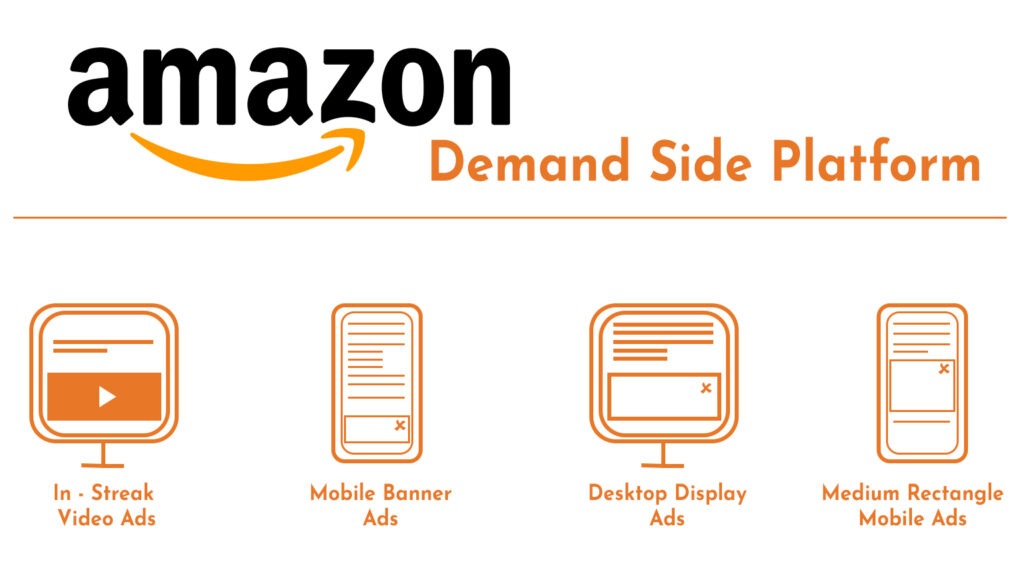
Now that you know how to target the correct audience, produce some ads. Here are four main ad types available to your brand through DSP.
1. Responsive eCommerce Creative (REC)
The very well-known ad type, Responsive eCommerce Creative (REC), initially became available to all marketers on Amazon DSP in January 2021. Advertisers can add up to 20 distinct ASINs to the build when building a REC, and they can select from up to 10 different supported ad sizes that will populate automatically based on the line item target type and ad format. These ads make it simple to create ads and optimize them using machine learning. Responsive eCommerce Creative has taken the place of Dynamic eCommerce Ads (DEA), which are no longer maintained. (REC).
2. Static Ads
Because static advertisements lack dynamic aspects, they require special calls to action, such as “Shop Now.” These advertisements should be used as mid- and upper-funnel strategies to entice customers and increase brand awareness. These advertisements link back to an Amazon product detail page, storefront, or personalized landing page.
3. Video Ads Through DSP
A powerful approach to sharing your brand’s narrative and engaging your audience on an emotional level is through video. Through DSP, video advertising can appear either as a display ad or within the video content itself (in-stream video). (out-stream video). Through DSP, you may link your video advertising to your website or a product detail page on Amazon. By using DSP to create video advertising, you can also use Amazon’s audience data to target relevant customers. When a customer is looking through Amazon product listings, they may run into these live advertisements in and around the product listings.
Video ads can help to:
Create an engaging ad experience
Convey your brand message
4. Over-The-Top Video Ads (OTT)
On the DSP platform, Amazon’s OTT advertising is also displayed. These full-screen, unskippable advertisements are an excellent approach to reaching millions of viewers of connected TV sources. (like the Amazon Fire TV Stick). Although you can target particular Amazon customers, you should be aware that these adverts cannot be clicked on.
5. Mobile Full-screen Interstitial Ads:

Using the Mobile Ads API, app developers may incorporate full-screen ads into their applications. These ads have a noticeable close button and an AdChoices icon, but they are not seen on Amazon Mobile Shopping. For tablets and smartphones running iOS, Android, and Fire, interstitial ads are supported. There are two different interstitial ad templates offered by Amazon. Both templates can be expanded to fit any mobile device’s screen size.
1. Full-Screen Image: Full-Screen Image, as its name implies, uses the entire screen of a device to display a single clickable image. The image will by default be scaled to show a guaranteed “safe zone.” You may add a video to the safe zone in the center of the full-screen template. A thumbnail video of 1280 x 720 pixels and a background image of 2560 x 2560 pixels are required for videos with a recommended runtime of less than 15 to 30 seconds.
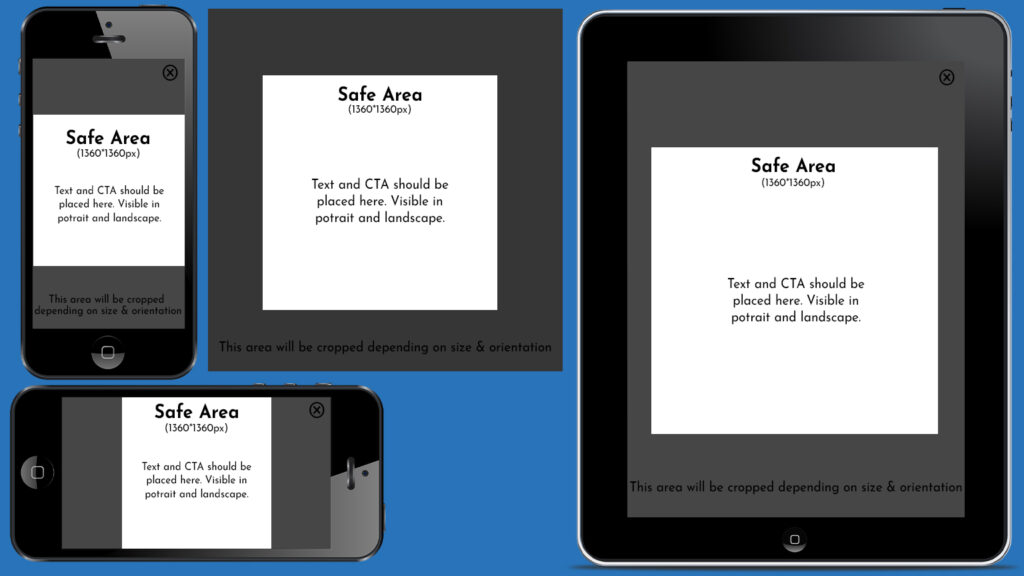
Advertisers are also allowed to add customer reviews along with the date. The format should be Amazon’s gold star and 49 points Arial fonts, as shown above.
Things to keep in mind
- 2560 × 2560 pixels is the ideal size for the background image. To ensure that it is visible and tappable, all the content, logos, and call-to-action language should be positioned within the safe zone of 1360 x 1360 pixels.
- The image must not exceed 2 MB in size.
- Give the safe zone a conspicuous call to action button so that clients will know where to tap. The button’s size should be greater than 160 pixels.
- Legal disclaimers should not exceed two lines in length and have a minimum font size of 48 points.
- Leave out the border
- White backgrounds should not be used for safe zone content. Give the place a variety of colors, designs, or lifestyles.
- No graphic should display to separate your advertisement into pieces.
- If an advertisement links to Amazon, it must display the Amazon logo or mention Amazon in the language.
2. Medium Rectangle: The center of the screen will have a 300 × 250-pixel advertisement with a customizable background. Advertisers using a ready-made mobile ad template can utilize this format for mobile devices.

Things to keep in mind
- The banner must be created at 2X resolution (600 x 500 pixels) because it is the only component and will be displayed in high-quality.
- Image size must be less than 100kb.
- The legal text is one line alone.
- If an advertisement links to Amazon, it must display the Amazon logo or mention Amazon in the language.
6. Mobile & Desktop Web Display Ads:
Standard-sized adverts for optimized display on Amazon and other websites around the internet are available for desktop and mobile devices. Advertisers can create the following types of banners, among others:
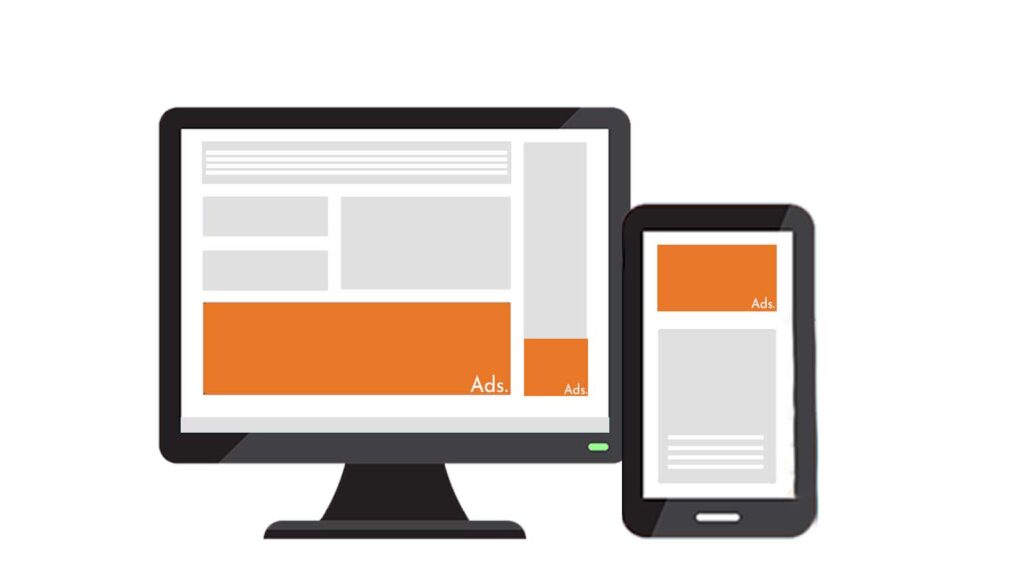
- (300 x 250 pixels) Medium Rectangle
- (728 x 90 pixels) leaderboard
- Skyscraper that is wide (160 x 600 pixels)
- (300 x 600 pixels) Large Rectangle
- Billboard (970 x 250 pixels; Offsite only)
- Mobile Leaderboard (need 320 x 50 to 640 x 100 pixels at 2X)
- Mobile Detail and Search Result Page (1242 x 375 pixels @3X needed) (414 x 125 pixels)
7. Mobile Banner Ads:
Advertisers may reach and target mobile users on third-party Android, Fire Tablet, and iOS mobile applications by using DSP Mobile Banner Ads.
Four ad banner sizes are available:
320 x 50
300 x 250
414 x 125
728 x 90
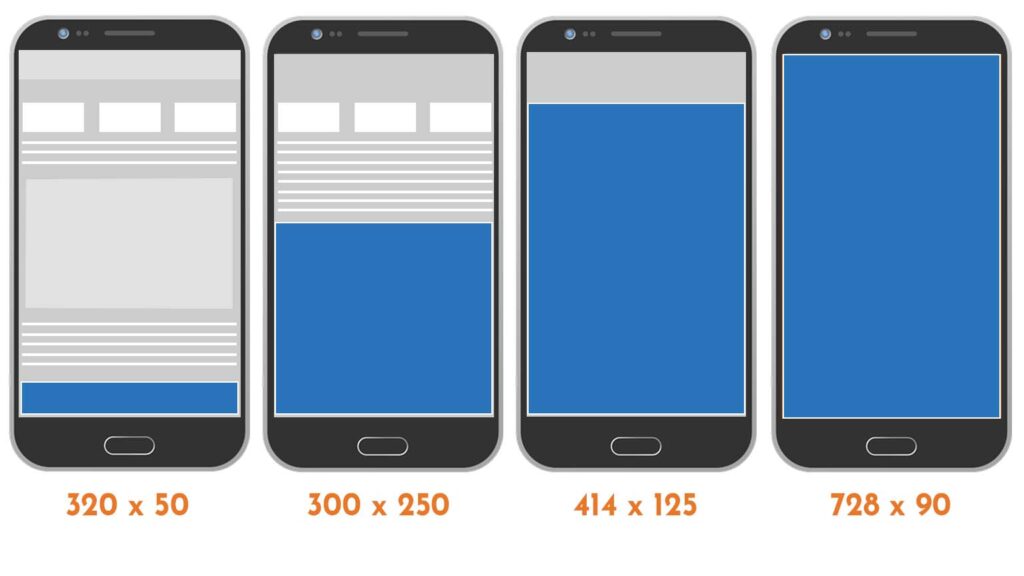
Things to keep in mind:
- To ensure a high-quality image on all devices, 320 x 50 banners must be designed in 2X resolution (640 x 100), and 414 x 125 banners at 3X resolution (1242 x 375). Other banners ought to be created at a 2X resolution for optimal results.
- A corner AdChoices label must be included on the banner.
- The backdrop image ought to be uncomplicated and unobtrusive.
- The text should just be brief.
- Including a 1-pixel border
- The advertiser’s name or logo must be present.
- Include a heading or message in the body
- GIFs are not advised.
- If an advertisement links to Amazon, it must display the Amazon logo or mention Amazon in the text.
How To Use Amazon DSP?
Make sure your product is retail-ready before you start using the upper-funnel methods by making sure your:
- The pictures are excellent.
- Descriptions and bullet points are properly optimized.
- You have a rating of at least 3.5 stars.
Additionally, we advise concurrently executing Ad Console campaigns for branded queries. Branded searches will rise if your DSP strategies succeed and you raise brand recognition. Not every product has the funding necessary for a full-funnel plan, nor does every product make sense to run year-round. Then, as needed, layer in mid- to upper-funnel efforts by maintaining an always-on approach to retargeting.
How Does Amazon DSP Work?
All brands selling on Amazon, including manufacturers, vendors, third-party sellers, and sellers who do not sell on Amazon, have access to Amazon’s audience thanks to Amazon Display Advertising. It is excellent for retailers who desire to:
- Generate brand awareness
- Enlarge your client base beyond the capabilities of the advertising console
- Utilize the Amazon customer base
- Identify users based on their lifestyles
- Obtain quality traffic
- Target customers based on their buying patterns and past purchases
Recent Updates To The DSP Interface:
The four major changes to the Amazon DSP user interface were released by Amazon in the second week of March. These improvements were made in response to suggestions made by program participants. The following areas have seen streamlining thanks to Amazon:
1. Navigation: The platform’s overall “look and feel” has changed as a result of Amazon’s most important update. The retail behemoth claims that using the Amazon DSP will now be easier and more effective. To improve user experience, the new layout makes buttons, toggles, and campaign status more noticeable.
2. Bulk Editing: DSP users may now quickly bulk edit line item targeting settings for the domain, audience, and location. Advertisers can apply the modified parameters across all lines of the chosen products after choosing them.
3. Custom Reporting: With the help of this capability, DSP users may design a specific report that meets their needs. The Amazon DSP report center is where they may later save and access it. Additionally, advertisers can choose exactly which columns to include. The report can be distributed to the designated recipients once it has been produced.
4. Creative Moderation: According to Amazon, it is working on “a number of improvements that will reduce the turnaround time for creative approval.” One of them is that they have cut down on how long it usually takes to notify advertisers when you revised your creativity.
Conclusion:
Amazon advertising options are a lot more useful than you think. Your shoppers may not be there yet, but Amazon’s advertising options can get you right in front of them. It is because their ad solutions are not limited to the platform. The number of brands that use Amazon DSP has increased by 50% this year. If you’re hoping to increase sales, new customer acquisition, and exposure, Amazon DSP may be a great option for you. To learn more about how you can grow your e-commerce brand, get in touch today with SIPRANSH ECOMMGROWTH.



